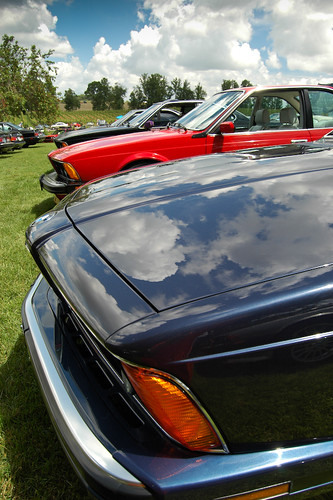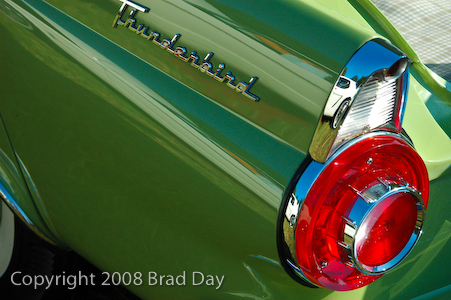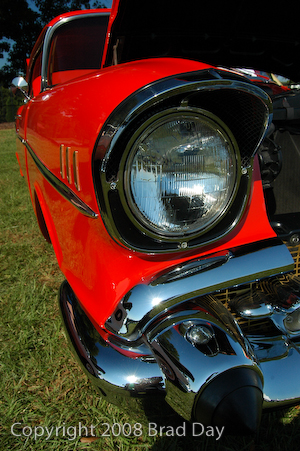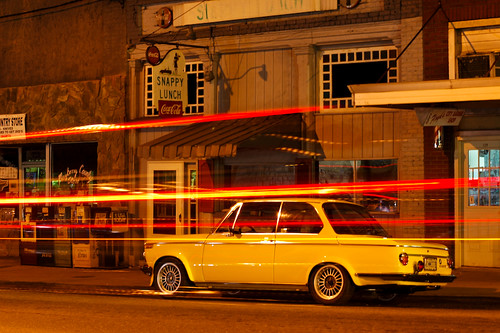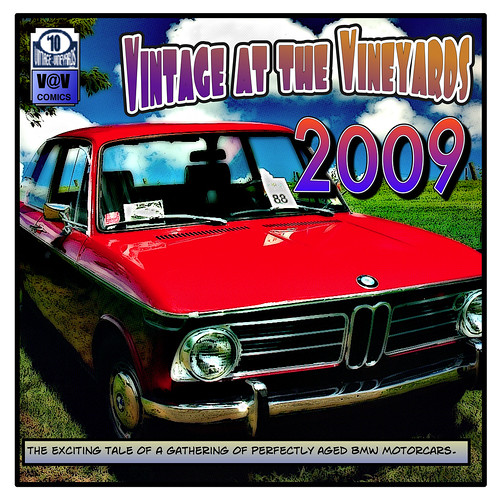While technically this isn’t all about fixing vintage cars, it is a project/hobby of mine so I deem it worthy of posting.
Here are a few handy tips I’ve picked up after photographing over 40 different car shows and races.
Tip #1 – Get yourself a polarizer.
Circular polarizers are a must have for shooting cars. They can reduce glare in bright sunlight but they also help to make colors appear more saturated. By adjusting the polarizer’s orientation you can really bring out some nifty details in reflections as well.
This is more of an option for DSLR users as I’m not aware of any point ‘n’ shoots that incorporate polarizing filters. I’ve bought cheap polarizers from eBay and Circuit City and have been happy with the results.
The nifty blue reflection on the chrome is enhanced by the polarizer in this shot:
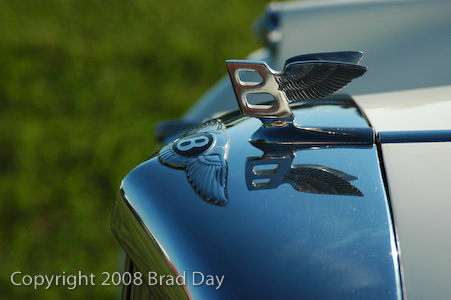
Tip #2 – Don’t shoot from the next county
I really dislike photos of cars that are taken from 20 feet away at car shows. You don’t always have to get a picture of the entire car, group of on-lookers and the show field behind all in one shot. It’s OK to just get a pic of one vehicle, even if you don’t capture the whole car. And there is no rule that states the subject has to be dead center with 4 feet of empty space surrounding that Mustang.
Sometimes I’ll take a whole car snapshot for later reference but I feel the better looking shots are ones that don’t necessarily look as if you are trying to capture the whole field in one snap.
Tip #3 – Find the lines
Vintage cars have some serious body lines. You don’t see sculpting like this on new cars and it often makes for great images.
Tip #4 – Get up and get down
Viewing pictures of cars shot from eye level is just fine if you want to showcase everything you saw as you saw it. But when you actually have a close look at a sexy vintage car, who stands at their full height to have a peek at the rich wood grain and leather interiors or the one of a kind tail lights? Take a seat (or a knee), get some ground level pictures that really detail that GTO’s stacked headlights. By the same token, creative shots are often as simple as holding the camera up above your head and snapping a few un-aimed pics.
Camera held at arms length above my head:

Tip #5 – Don’t forget the peeps
I’ll be the first one to admit that I don’t get enough shots of people at car events. But the interaction of people and vintage cars is what racing or concours shows or swap meets are all about…and there are usually some characters at any one of these events.
I snapped this one inconspicuously as we were just stopping our drive though the WV hills for a lunch break:
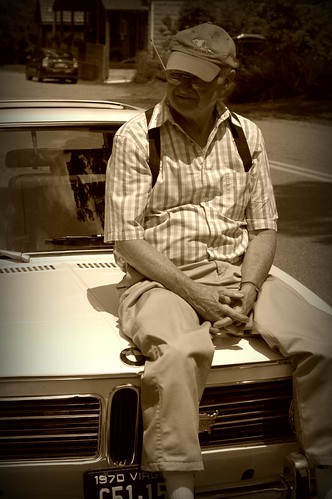
Tip #6 – Do something crazy
Some cars are so fast that they look as though they’re moving even when standing still. Others are so sexified that they hardly require any thought at all to make a fine looking picture. But not every image has to be a perfectly composed portrait of automotive genius. Tweak your shutter speed and take a long exposure image to get interesting blur effects. Do a zoom burst exposure to highlight one area of the car. Photoshop the heck out of the image to really bring out those vintage paint schemes.
Zoom burst exposure, 1/6 second exposure while zooming in with telephoto lens:


